Modern Art History - Exam 1 Short Answer Questions
1/12
There's no tags or description
Looks like no tags are added yet.
Name | Mastery | Learn | Test | Matching | Spaced |
|---|
No study sessions yet.
13 Terms

Tippu’s Tiger
1790
Artist not listed
Comment:
India colonization: Lion defeating tiger was common imagery
Rep. British power over India
Flips dynamic on it’s head
During the colonization of India, art of a lion defeating a tiger was common. This was a visual representation of Britains power over India. This piece flips this dynamic on its head emphasizing Indian power and autonomy.
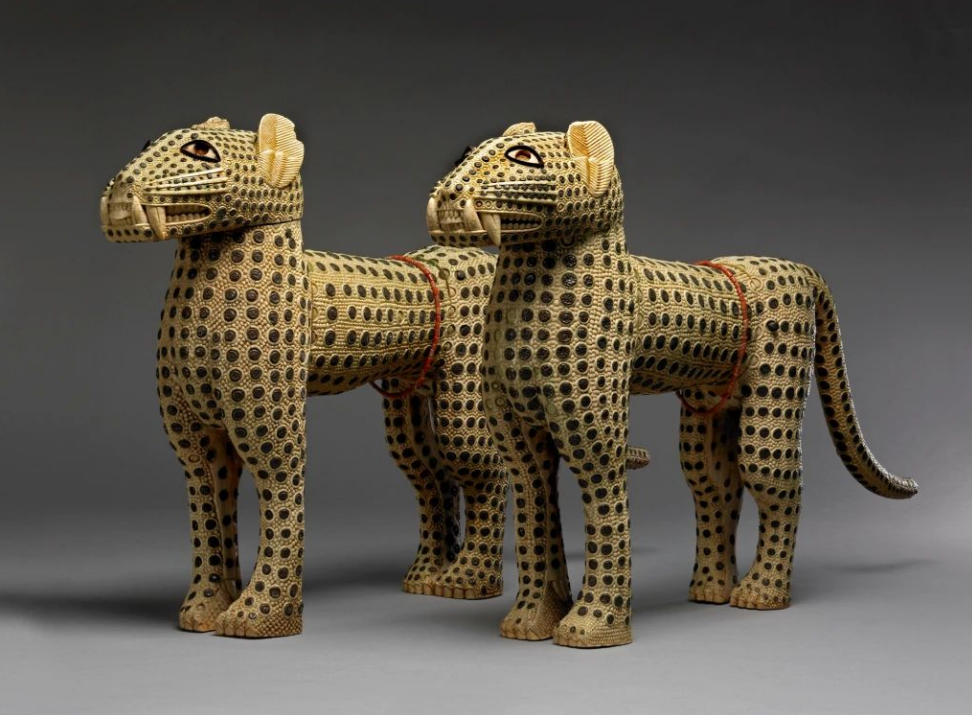
Carved leopards
Kingdom of Benin
19th Century
Comment:
Direct symbol of colonization
Gun percussion caps = remains of conflict
Leopards = regal symbol
Later stolen when Benin was colonized
This pair of leopards is a direct representation of colonization. First, leopards are a symbol of power and monarchy for the kingdom of Benin. This piece was later stolen when the kingdom was colonized. Second, the gun percussion caps that create the leopard’s spots originate from the remains of battle, which is inherently connected with colonialism.
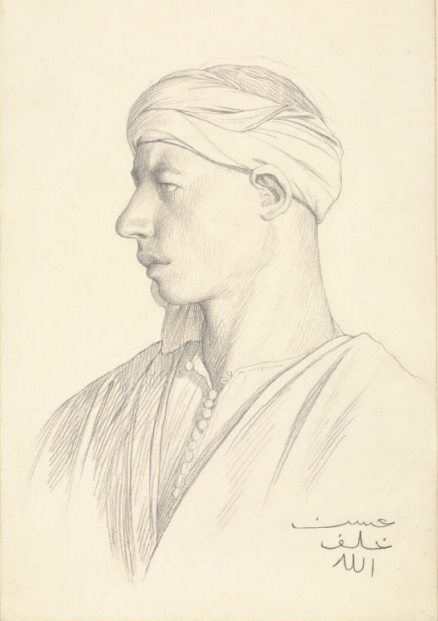
Portrait of an Egyptian Fellah
Jean-Léon Gérôme
~1855
Comment:
Visited Egpyt
Framed as objective / observational (But has European bias)
Emphasis on side profile (bc of developement of phrenology)
This artist frequently visited Egypt for artistic study. While the drawing is framed with an objective, observational view it does show examples of European bias. For example, the side profile is emphasized because of the development of phrenology at the time.
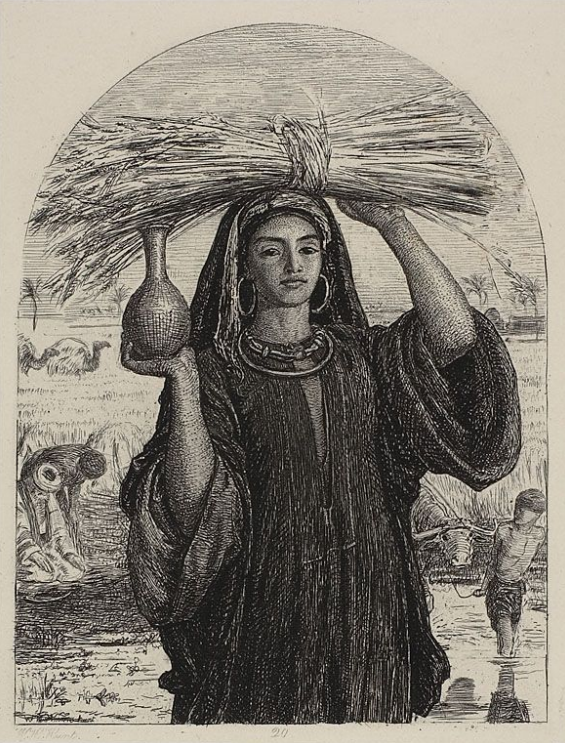
The Abundance of Egypt
William Holman Hunt
1860
Comment:
Example of colonialist imagery
Pushing of Christian Iconography (bread / wine)
Pushes Christian values on Egypt
This piece is an example of subtle colonialist imagery in art. The classic Christian iconography of the bread and wine is depicted through the jug and wheat. The inclusion of these symbols pushes Christian values onto Egpytian culture.
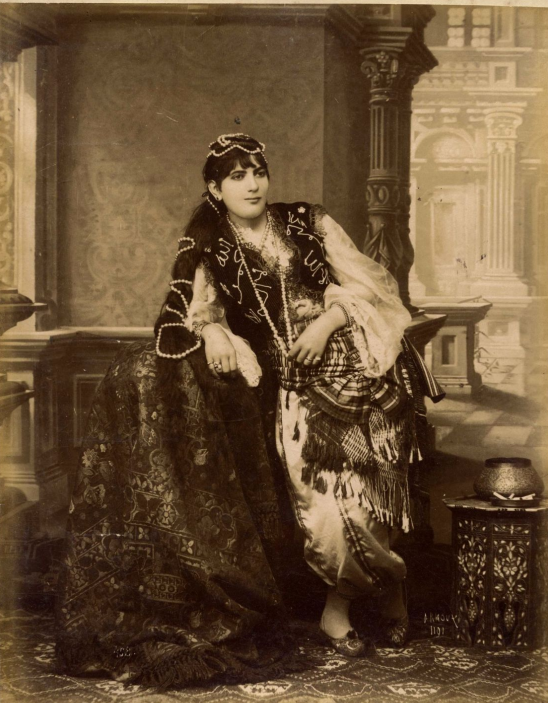
Photo of Woman in Oriental Dress
Hippolyte Arnoux
1880s
Comment:
Direct ex. of orientalism
Perpetuates inaccurate + oversexualized generalization
Women as objects for consumption
This photo is a direct example of the orientalism seen in European depictions of Egyptian women. Images like these perpetuate an inaccurate and oversexualized generalization of Egyptian culture than frames these women as objects for consumption.
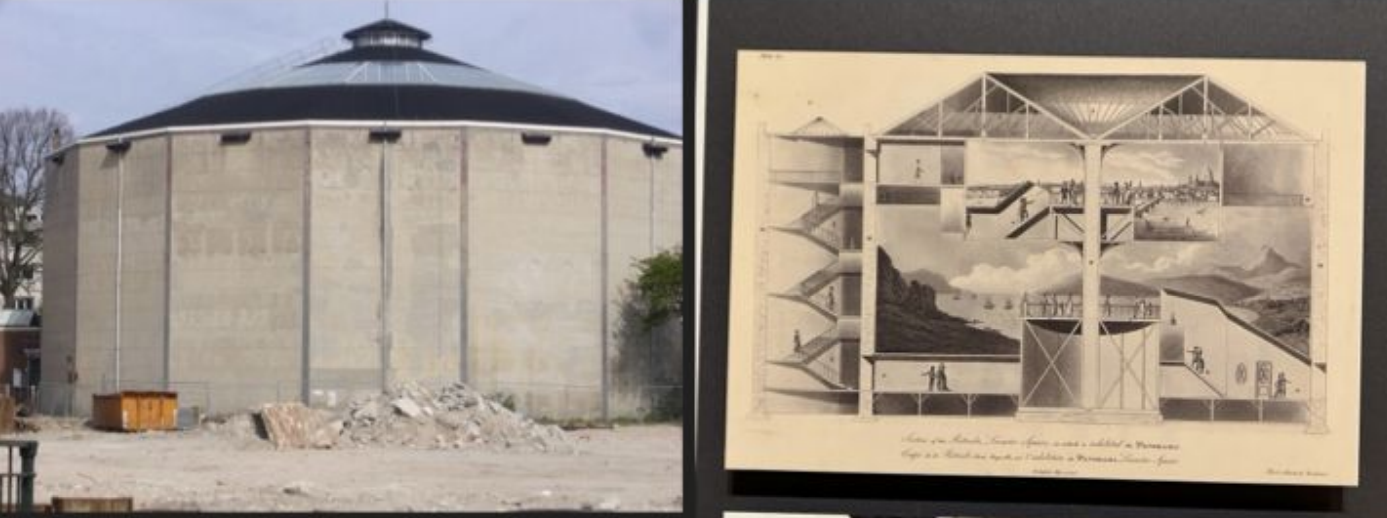
Panorama Mesdag
Hendrik Willem Mesdag.
Opened 1880
Comment:
Panoramas = uniquely immersive
Inhabit a space
360 degrees + sand and light create illusion of being on top of the dune
Panoramas are a uniquely immersive form of art that allows viewers to inhabit a space. The 360 degree range of the painting combined with additional elements such as sand, light, and the lookout deck create the illusion that visitors are really standing on the Seinpost dune.
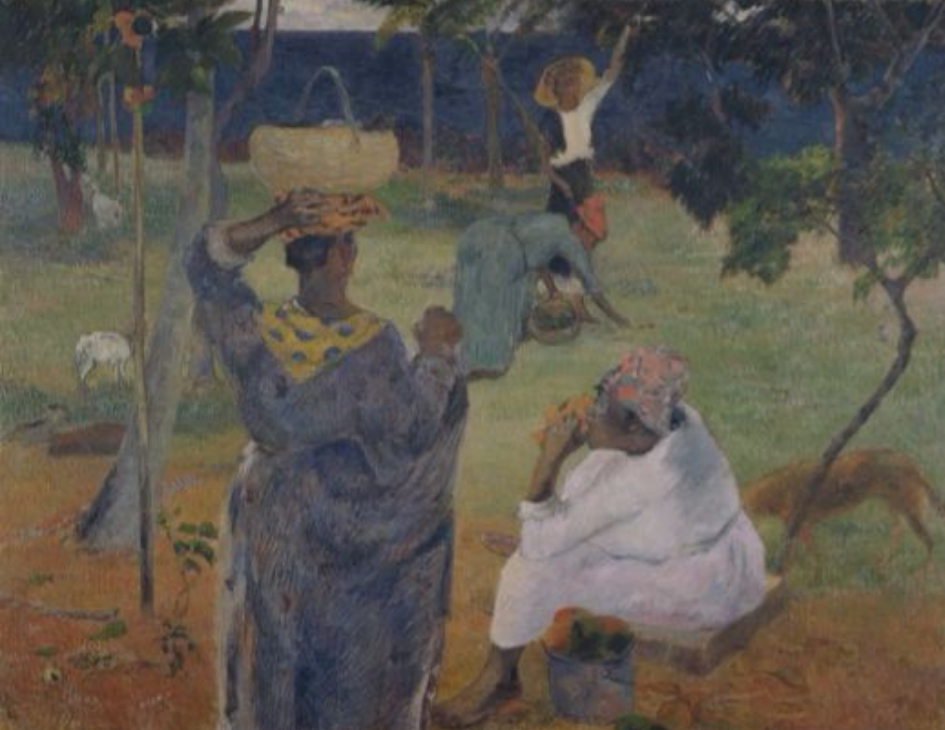
The Mango Trees, Martinique
Paul Gauguin
1890
Comment:
View of cultures not influenced by the West
Places like Martinique (found fruit available)
Exoticized and depicted as primitive
This painting gives a look into how Gauguin viewed cultures untouched by western influence. Places such as Martinique where found fruit is available are exoticized and depicted as primitive by Gauguin.
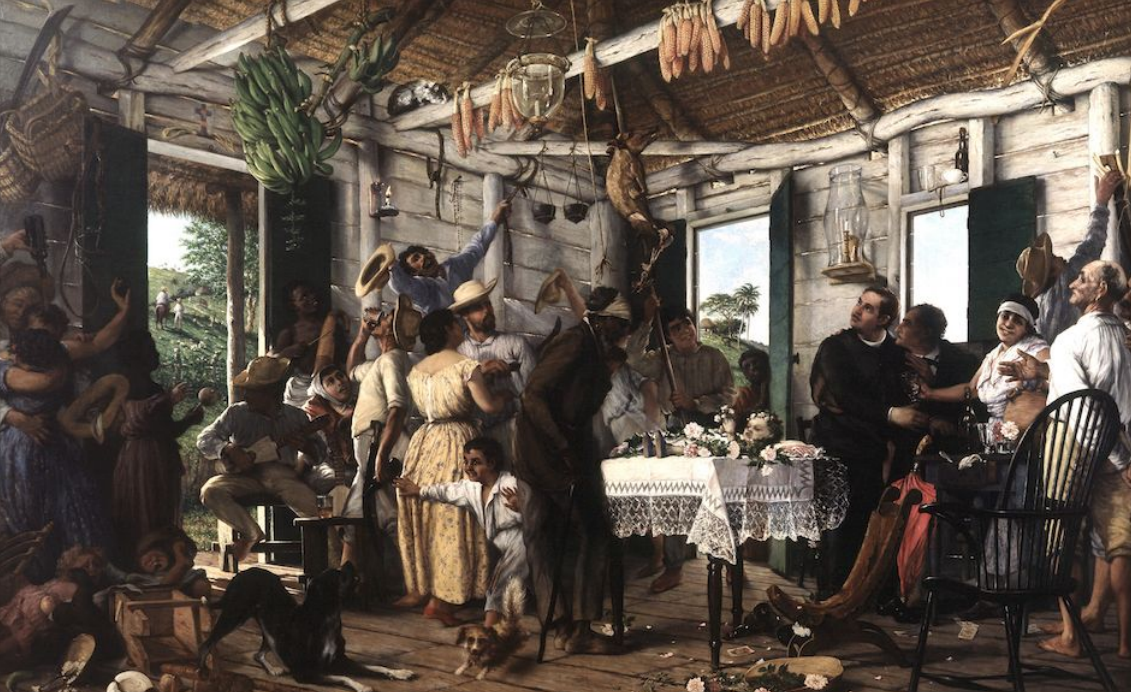
The Wake
Francisco Oller
1890
Comment:
Visually emersive w/ deeper meaning
Attendees = distracted (not looking at child)
Criticism of culture that values wordly possessions
In addition to being a visually immersive piece, it also conveys a deeper message from the artist. In the painting, the people attending the wake are distracted by other activities rather than looking at the deceased child. This is intended as a criticism of culture that values worldly possessions above all else.
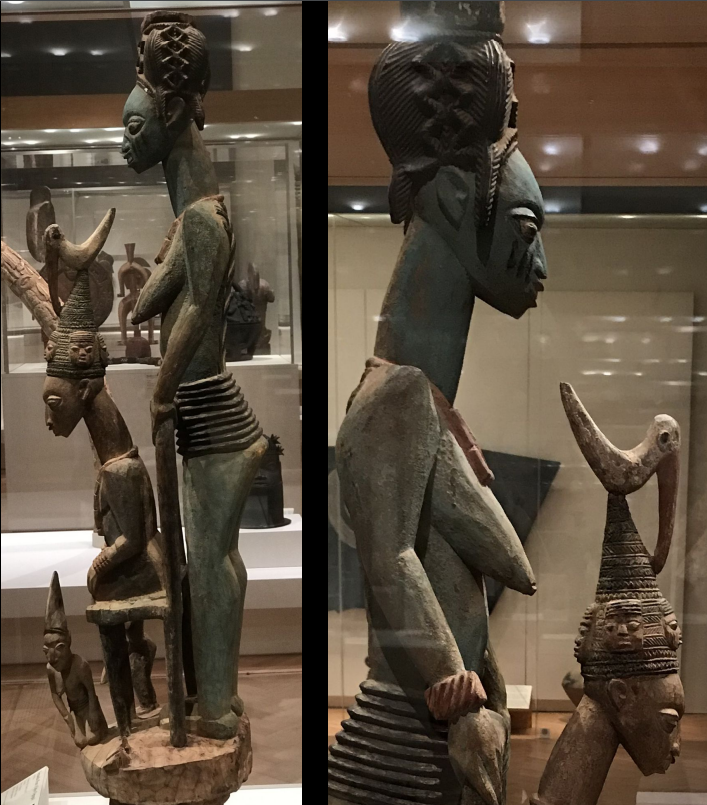
Veranda Post of Enthroned King and Senior Wife
Olowe of Ise
Early 20th Cent
Comment:
Art as function
Part of working architecture
Display the power dynamic of the king and wife
This wooden post is an example of the merging of art and function. In addition to being a part of the working architecture of the building, it also depicts an interesting dynamic between the king and his wife, highlighting her significance and power.
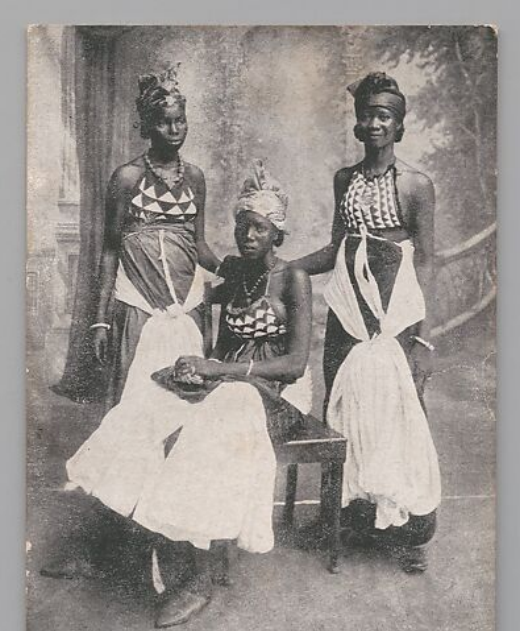
Bundoo Girls
Alphonso Lisk-Carew
1905
Comment:
Difference in approach between Alphonse Lisk-Carew and European photographers
Artistic rather than ethnographic
Emphasize individuality w/ posing
This photo highlights the difference between how the Bundoo women were depicted by Alphonse Lisk-Carew compared to European photographers. Lisk-Carew’'s artistic rather than ethographic approach uses posing to emphasize the individuality of the women in the photo.

Two cats holding a large praw
Jamini Roy
1920
Comment:
Made around rise of eclecticism (Western + Indian style)
Bengali folk art style
Preserving traditional Indian art practice
This piece was created around the rise of eclecticism in Indian art that combined western and Indian elements. Instead, it returns to the style of Bengali folk art, emphasizing the importance of preserving traditional Indian art practice.
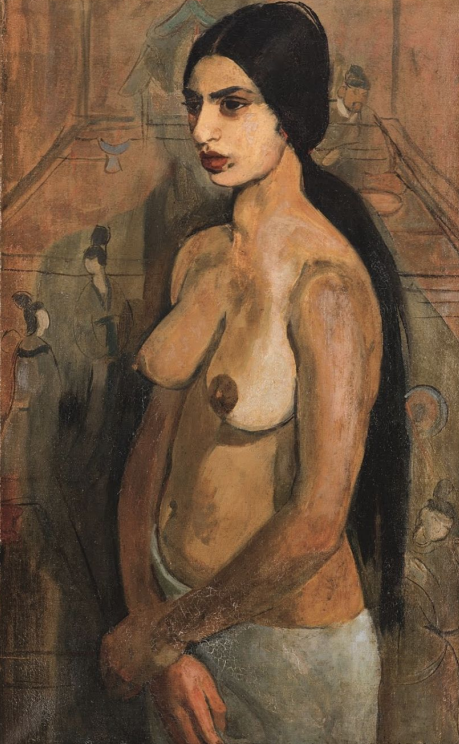
Self-Portrait as a Tahitian
Amrita Sher-Gil
1935
Comment:
Response to Gaugin and Van Gogh
Art of non-European women
Rampant sexualization
Her experience being exoticized as a bi-racial woman
Sher-Gil’s work is a response to art by Gauguin and Van Gogh that depict women from non-European cultures. It grapples with the rampant sexualization of women from these cultures while also speaking to her experience being exoticized as a bi-racial woman.
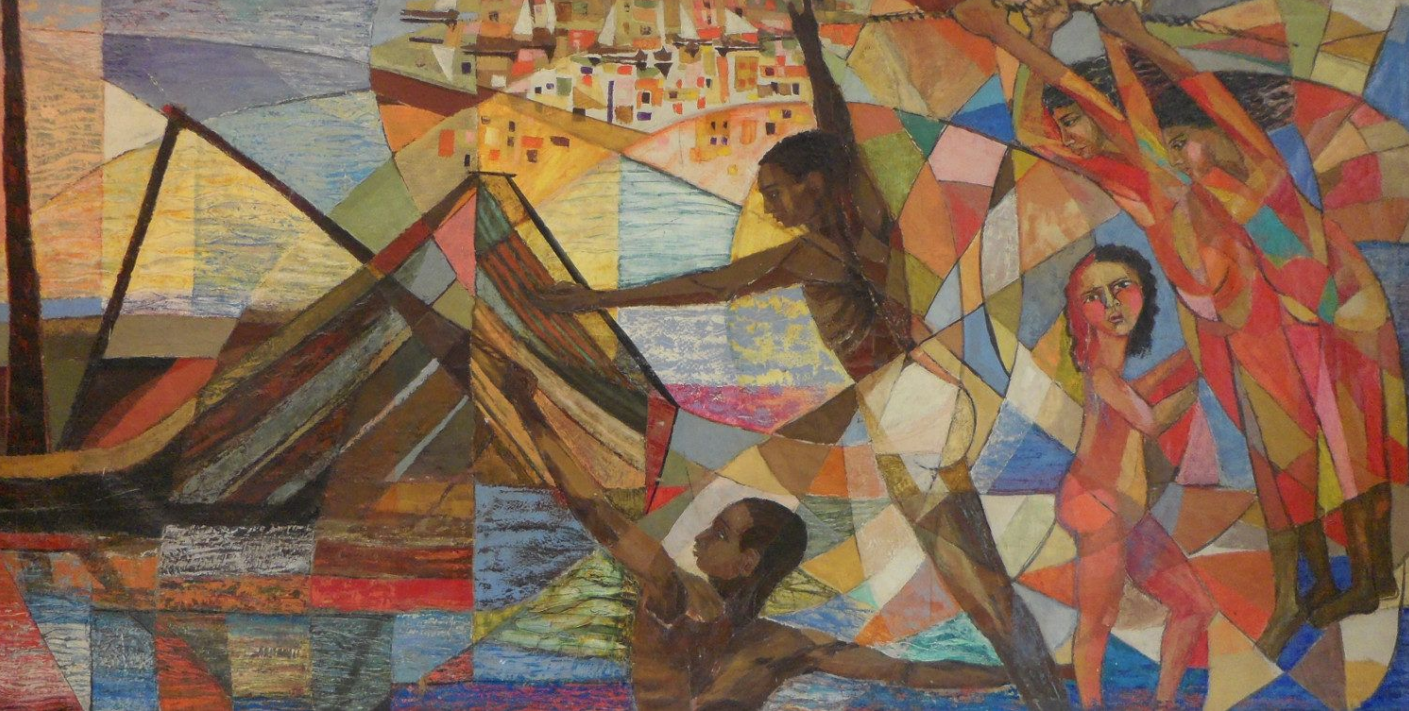
Life on the Embankment of the Nile
Gazbia Sirry
1960
Comment:
Relationship between Egpytian people & the Nile
Created during decolonization of Africa
Reclaiming of connection
This painting emphasizes the relationship between the Eyptian people and the Nile. It was created during the decolonization of Africa, which adds context to this piece as a reclamation of this relationship.